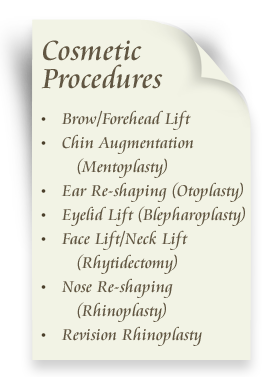
Special Considerations for Men's Facelifts
Men are becoming more interested in looking younger on the outside—especially when they feel young on the inside, and are turning to cosmetic facial surgery procedures such as facelifts and neck lifts to achieve this. Just as with other facial cosmetic surgery procedures, the techniques of male facelift surgery are, for the most part, similar to that of the female. However, the following considerations must be addressed when operating on men's faces: variation in scar camouflage techniques; differences in facial skin anatomy; hairline distribution and hair loss; and the male-predominant effect of aging in the lower face and neck.
In the male, the lower face differs from the midface in several ways. The beard on the lower face brings with it even thicker skin with a greater blood supply. Consequently, men have a greater risk of hematoma formation and post-operative swelling compared to women. Because of the heavier skin, soft-tissue fillers and suture suspension techniques have a more limited role.
There are several approaches to take when performing facelifts and neck lifts on men; Dr. Morrow will review all the options with you depending on your age, overall health, and cosmetic surgery goals.
For example, for male patients undergoing a full face and neck lift, care must be taken to design incisions so as to preserve the sideburn and to avoid pulling sideburn hair into the ear. In some patients, skin and submental fat can be removed with an irregular vertical closure to break up the scar and make it look less conspicuous. In the midface of select male patients who are willing to accept a scar, direct excision of a deep nasolabial fold may be the most effective method for permanent effacement of this area. Direct excisional methods are particularly suited for the elderly male patient with some health issues, in whom a prolonged general anesthetic is undesirable.
The Facelift Procedure
During an outpatient three-to-four-hour procedure which is typically performed using twilight anethesia, incisions are carefully placed around the ears and into the hairline (or elsewhere as deemed necessary by Dr. Morrow during his consultation with you). A small cannula connected to suction helps to sculpt the fatty tissue of the lower face and neck. The skin is then lifted and the underlying muscles and connective tissue are tightened and secured. The skin is artfully redraped, and excess skin is removed. A bulky bandage is maintained for four days; sutures and staples are removed by the tenth day, when nearly all the bruising and swelling is gone. Mild discomfort is easily controlled with analgesics.






